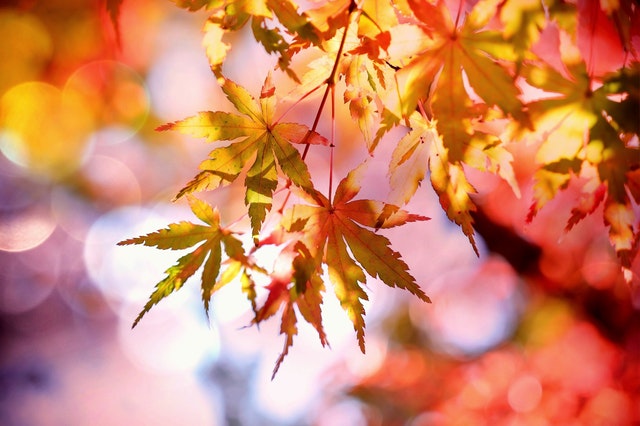Autumn is the golden season for photography — with colourful leaves nearly everywhere you look, finding a colourful subject in autumn isn’t hard to do. But capturing all those autumn colours can present its own challenges, from nabbing the exposure to getting those colours perfectly saturated in the final print. Here are five autumn photography tips to get you started.
Try filters.
One of the trickiest parts of taking an autumn photograph is getting an even exposure between the sky and those colourful leaves. Often, that perfect exposure is impossible without a filter. Filters are relatively inexpensive yet can make a dramatic impact on the final image. A circular polarising filter will make the sky appear more blue and control reflections — and those qualities also tend to help the filter make foliage pop. A graduated neutral density filter is another filter for fall — placing the darker portion of the filter over the sky can help make sure it’s not overexposed into a boring white mass.
Choose the right lens.
Often, the autumn foliage is impressive because of the expanse. If the scene inspires you because there’s colour everywhere you look, try a wide angle lens to fit it all in. Wide angle lenses allow you to shoot that impressive expanse.
You don’t need to leave a wide angle lens on your camera all autumn, however — swap lenses to fit your vision and the part of the scene that inspires you. A macro lens can capture the details of those colours up close. When shooting an autumn portrait, a mid-length telephoto can capture both the subject and the colourful background.
Experiment with backlighting.
Autumn leaves are spectacular — but add some golden sun behind it and autumn leaves look like magic. Two big things happen when you stand so that the sun is coming in from behind the leaves. First, the leaves are thin enough that the light makes them appear to glow, creating an even more vibrant colour. Second, when light hits any leaves that are out-of-focus, those leaves will create circular bokeh. Just make sure to watch the exposure and look out for lens flares when shooting with backlighting.
Try exposure bracketing to get the perfect exposure.
Getting the exposure just right for autumn pictures can be tricky. If you are having a hard time getting the exposure just where you want it, turn on exposure bracketing. With this setting, you’ll get three images all with small exposure adjustments between them, increasing the odds that you didn’t loose too many details to over or underexposure.
Play with paper.
Once it is time to put that image on a physical print, don’t just stick with the default paper. The paper type will play a role on how the colours appear in that final image. Fotospeed says that glossy type papers will make those colours appear more saturated, while papers without that sheen give the colours a more matte feel. Try printing the image on two different types of paper to determine which paper type presents your particular shot the best.
The autumn season is often bursting with photographic inspiration — but to make sure those shots are just as colourful as in real life, make sure to try a few autumn photo tips.
